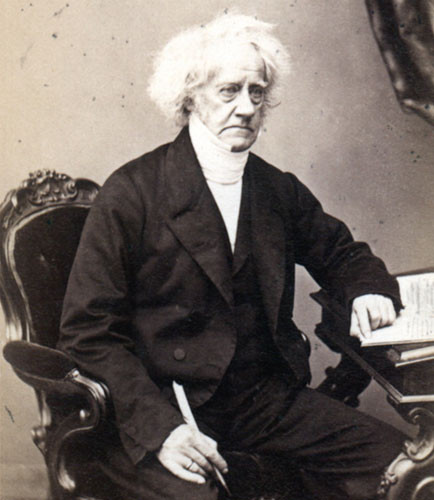Far Infrared Rays (FIR)
Everything You Need to Know About Far Infrared Rays (FIR)

What are Infrared Rays?
As you can see by the graphic to the left, most of the spectrum of light is invisible, and far infrared rays (FIR) are just one part of the infrared piece of the spectrum. Approximately 80% of solar energy consists of far infrared rays, which are responsible for all life on Earth. Far infrared rays are responsible for photosynthesis which allows all plants to grow, as they are the "life-giving and energizing" part of the electromagnetic spectrum. So it's no wonder that these same light rays can be responsible for healing us.
FIR is the radiation we feel, but cannot see, from the sun that makes us feel better as they penetrate our bodies and give revitalizing energy. Far infrared rays can penetrate through our skin surface and into the body tissues of our internal organs due to their length.
Understanding Far Infrared Rays and Thermotherapy
Every part of the electromagnetic spectrum comes with a corresponding heating temperature and FIR has a heat signature that isn't only beneficial for our health, but also long enough to penetrate to do the work. There is a purpose to all spectrums of light, but unlike visible light, far infrared light can actually heal life. Unlike ultraviolet rays and X-rays, which have shorter wavelengths and higher energy levels, far infrared rays have longer wavelengths and lower energy levels. This makes infrared radiation safe for human exposure, as they do not possess the harmful effects associated with other forms of radiation.
Far infrared rays are invisible to the naked eye but can be felt as heat. This is because they generate thermal energy when they come into contact with an object, such as the human body. The heat, or thermotherapy (aka infrared heat therapy), generated by these electromagnetic waves is often described as a gentle warmth that penetrates deep into the tissues, providing a range of therapeutic effects.
FIR helps increase circulation in the body. When circulation is increased, every organ and system in the body functions at its optimum capability. Infrared heat also raises the core body temperature, inducing a false fever, which in turn helps speed up cell activity, including those that fight disease and sickness, and allows them to fight bacteria and viruses faster. Infrared treatment can help increase the health of the immune system over time. Consistent far infrared therapy can increase energy and help with chronic health issues. Short-term use of far infrared therapy detoxifies the body, alleviates pain and stress, and helps people sleep better.

The History of Far Infrared Light
Far infrared light was discovered by William Herschel in 1800 as a byproduct of measuring the temperature of the colors of the visible light spectrum. At the time, it was unknown that the light spectrum continued into the invisible. As he moved through the spectrum, he noticed one color was warmer than the next and that red was the warmest. But as he moved past red, he noticed the temperature got warmer but that there was no corresponding color to go with the new temperature. This is the moment far infrared light was discovered. In Greek, "infra" means "below". The new, invisible part of the light spectrum was "beyond" red, or infrared. Herschel had discovered infrared light but it wasn't until the late 1800's that it was first used to benefit the human body.
In the following decades, scientists further explored the properties and characteristics of infrared radiation. They discovered that infrared radiation could be divided into three main categories based on its wavelengths: near-infrared (NIR), mid-infrared (MIR), and far infrared (FIR). Far infrared radiation, with wavelengths ranging from 15 to 1000 micrometers, was found to have unique properties and effects on the human body.
At the end of the 19th century, Dr. John Harvey Kellogg (the same man who invented Kellogg's Frosted Flakes), invented the incandescent light bath and he treated many patients, including King Edward of England, with it that had a wide variety of illnesses. However, Kellogg had no idea that infrared light was the main reason for his invention's success. He had no idea of the effect infrared light had on human cells. Even a hundred years later, humans were using infrared light to heal and were not aware of it. But in 1965 that changed when NASA started studying how light affected the human body.
In 1962, U.S. President John F. Kennedy challenged the nation to get to the moon. In the midst of the Cold War with Russia this challenge, coupled with the necessity of besting Russia, produced some of America's biggest discoveries, not only in space technology, but also in medicine. NASA was charged with a huge amount of this responsibility and began to research the effects light had on the human body in an attempt at keeping our astronauts in good health until they returned. Experiments in zero gravity at the time showed the effects it had on the human muscular and skeletal systems in terms of serious atrophy. In the course of trying to find a solution to this problem and experimenting with light's effects on the body, NASA stumbled (just like Herschel and Kellogg had) onto the benefits of infrared light.
NASA found that by exposing their astronauts to infrared light, a cellular regeneration of muscle tissue and bones occurred. Obviously, discovering this fact sparked more research and NASA was the first to identify two totally separate bands within the infrared part of the light spectrum: near and far infrared light, and that each had different effects on the human body.
As NASA further studied far infrared light, it discovered that it had the unique ability to move through human skin into the soft tissues of the body. It was at this time, in the late 1960's, that far infrared light became a focus in the medical community as a medical treatment.
Over a decade later, the National Institute of Health (NIH) did a study on the healing effects of far infrared light on rats and had considerable success with healing wounds, concluding that FIR would have a substantially postive effect on human cells.
And what followed was a far infrared light revolution as the first infrared saunas hit the market.

